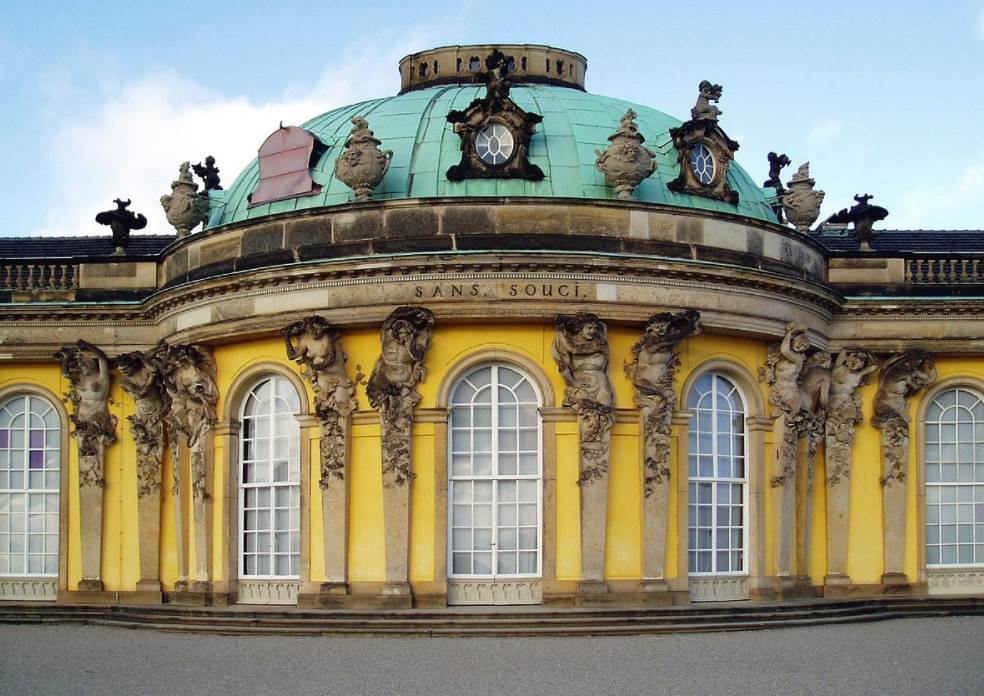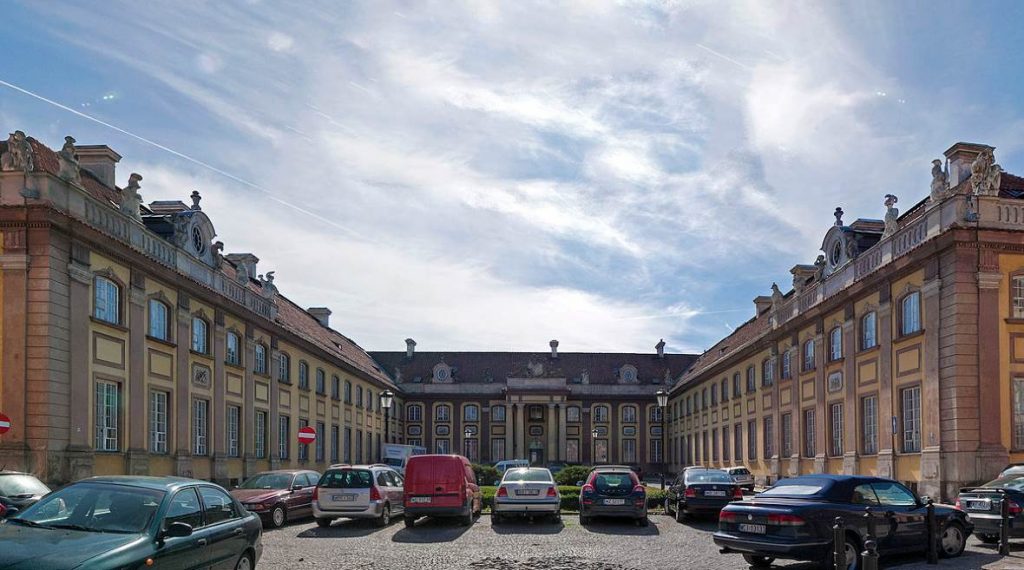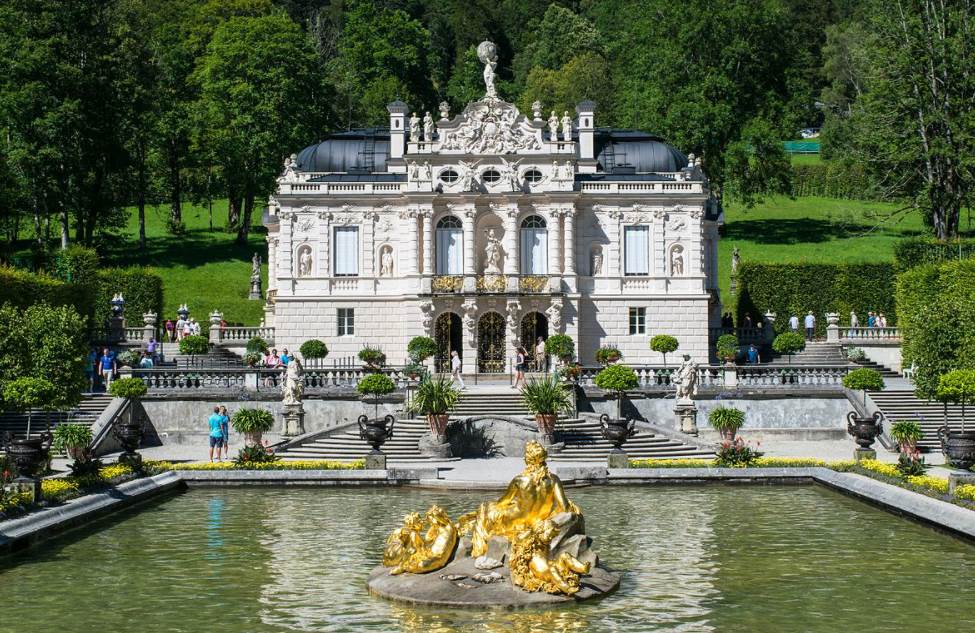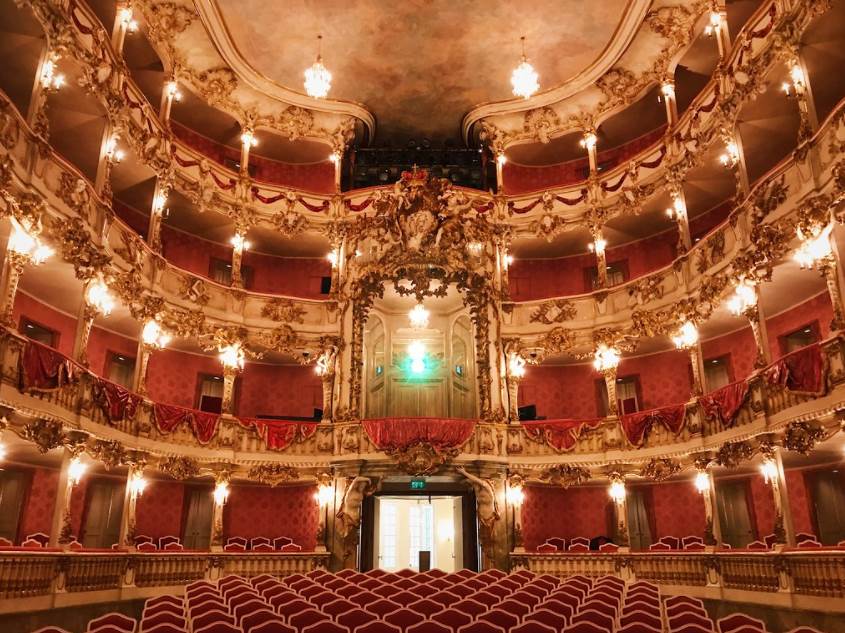When the formal and well-organized Louis XIV style started falling out of favor in the early 18th century, an art movement emerged in France that was originally called “Rocaille.”
This style was eventually referred to as Rococo and is defined by combining asymmetrical forms with exuberant and extremely theatrical decorations, including so-called trompe-l’œil frescoes which create an optical illusion. Rococo emerged as a form of design, painting, and architecture, and is often referred to as the Late Baroque.
Baroque buildings of the 17th century were already very decorative compared to Renaissance buildings of the 15th and 16th centuries, and the Rococo architectural style took this a step further.
Although the style emerged in France, it eventually spread all across Europe. In this article, we’ll take a closer look at some of the most famous Rococo buildings ever constructed.
1. Sanssouci Palace
Sanssouci Palace was the summer residence of King of Prussia Frederick the Great. It was built between 1745 and 1747 and is one of the prime examples of a Rococo building in Germany. It means “No Worries” and the theatrical Rococo design was used to create this type of atmosphere.
It’s far from being the largest palace in Europe as it’s considered to be nothing more than a large one-story villa, but the curved design of the style reflects this remarkable structure. It also features an immense garden full of follies and temples.

2. Amalienburg
Amalienburg is a simple hunting lodge that was designed as a marvelous Rococo building. It was commissioned by Elector Karl Albrecht, a man who became Holy Roman Emperor Charles VII, for his wife Maria Amalia of Austria, hence the name of the building.
The building in Munich was constructed between 1734 and 1739 and designed by renowned Belgian-born architect François de Cuvilliés (1695-1768), a man who singlehandedly introduced the Rococo architectural style to Central Europe. The Hall of Mirrors inside the building is considered to be the epitome of Rococo architecture.

3. Hôtel de Soubise
The Hôtel de Soubise was built by the Prince and Princess de Soubise on the location of a former 14th-century fortified mansion in the 3rd arrondissement of Paris. Although the exterior was designed in the Baroque architectural style, the interior features exuberant Rococo rooms.
Especially the “Salon de Princesse” is a prime example of the extremely theatrical style that defines Rococo. Although it once served as a private mansion, the building no has a completely different purpose as it houses the Musée des Archives Nationales and some of the French National Archives.

4. Branicki Palace
The Branicki Palace is an opulent mansion in Warsaw, the capital of Poland. It was commissioned by a Polish magnate named Stefan Mikołaj Branicki and is one of 3 palaces with the same name in the city. This one is located on Miodowa Street in the city’s Old Town.
This famous Rococo building was inspired by French palaces and has the shape of a horseshoe, a curved design that is distinctive for the style. The palace was expanded in the early 19th century and although it was severely damaged during World War II, it was completely restored by 1967.

5. Linderhof Palace
Linderhof Palace is a Schloss in the southwest of Bavaria, a state in the southeast of Germany. It was commissioned by King Ludwig II of Bavaria, the man who also commissioned the construction of the world-famous Neuschwanstein Castle.
What’s remarkable about this building is that it was constructed between 1863 and 1886, a time in history referred to as the “Second-Rococo period.” It’s believed that Ludwig was inspired by the Palace of Versailles, although this Rococo building is much smaller than its opulent French counterpart.

6. Cuvilliés Theatre
Cuvilliés Theatre is the theater building of the so-called “Residenz” in Munich, the former royal palace of the Wittelsbach monarchs of Bavaria. It was named after the Rococo architect who designed it and was built between 1751 and 1753, the height of the Rococo era.
The interior of the horseshoe-shaped building consists of 4 floors featuring boxes that are amazingly decorated in red and gold. It’s fair to conclude that this famous opera house embodies the architectural style of the Rococo period.

7. Copper-Roof Palace
The Copper-Roof Palace is a palace in Warsaw, Poland, which takes its name from the unique feature of a building constructed during the first half of the 18th century. The original palace was built between 1651 and 1656 and was completely rebuilt during multiple phases in the Rococo style. The building was also decorated with Rococo paintings inside.
It’s part of the large Warsaw Royal Palace Castle and is located in the Old Town of the city. Today, it’s part of the Royal Castle Museum and often features exhibitions related to the history of the Polish Kingdom. Although the building was completely burned down during World War II, it was completely rebuilt to its original design shortly after.

8. Catherine Palace
The Catherine Palace is a huge building located about 30 kilometers south of Saint Petersburg, Russia. It was named after Catherine I, the wife of Peter the Great who established his capital here in the early 18tn century. His wife had the old farm on this location completely rebuilt in 1723.
The original mansion commissioned by Catherine I was expanded in the Rococo architectural style during the 1750s. She hired famous Rococo architect Bartolomeo Rastrelli and he turned this 16-room mansion into an exuberant palace that has a length of 300 meters. Both the exterior and interior are prime examples of buildings constructed during the Rococo era.

